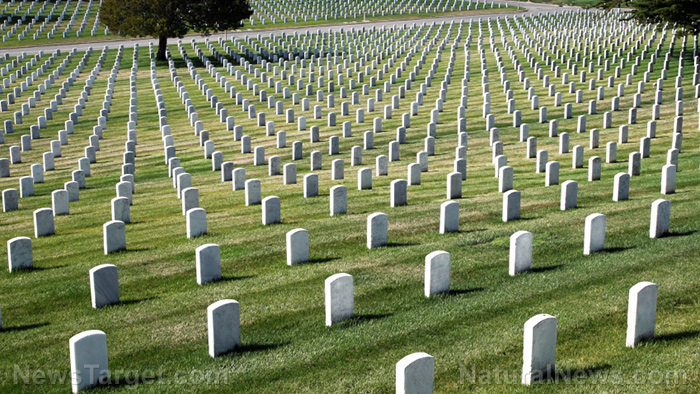
Advertisement
Iran is building at least 10,000 new graves in the Behesht-e Zahra cemetery in Tehran for future coronavirus victims. This cemetery, the largest in Iran, covers more than 1,200 acres of land and contains nearly 1.7 million graves.
A video posted on Twitter showed rows upon rows of empty plots, which appear to be a new section built for coronavirus-related deaths. As the camera pans away from the newly built graves, wailing families can be seen mourning the loss of their loved ones.
April 27—#Iran's official #coronavirus stats
5,806 dead
91,472 casesOne Iranian official said the true number of cases & deaths are 20 times higher than official stats.
Cemetery near Tehran
Locals say countless COVID-19 victims are buried here.pic.twitter.com/z3gIKAqobc— Heshmat Alavi (@HeshmatAlavi) April 27, 2020
Tehran deputy mayor Mojtaba Yazdani told state news agency IRNA on Sunday that isolated facilities were also being constructed at Behest-e Zahra, so workers can conduct the traditional washing of the bodies before they are buried. These facilities will be built over former crisis shelters constructed on the cemetery’s grounds. The graves are dug 6.5 feet deep (two meters); however, the bodies will not be dusted with quicklime, the substance coated over graves that help prevent the spread of disease. Meanwhile, other cities dust the graves with quicklime and bury the dead in layers of protective shrouds.
Preparing for a second wave
Iranian officials have allowed so-called “low-risk businesses” – such as shops, factories and warehouses – to resume operations April 18, following reports of the daily coronavirus death toll hitting an all-time low. In addition, intercity highways and major shopping centers all over the country have been open since April 20.
Top officials in the country argue that the country cannot afford to remain in lockdown, saying that it is possible for the country to deal with the virus and reopen the economy through “smart social distancing” measures.
Businesses that wish to reopen need to register online and be inspected by health officials. Commuters are discouraged from using public transportation due to anti-congestion measures, leading to a significant uptick in car traffic in Tehran’s highways.
Iraj Harirchi, Deputy Minister for Health, warned that the partial lifting of lockdown restrictions can be reversed in the number of infections and deaths goes up once more.
But not everyone is on board with the reopening of businesses, as some people, including members of the Tehran City Council, remain skeptical. Mohsen Hashemi, chairman of the city council, challenged the Ministry of Health to reveal the number of COVID-19 cases and deaths in Tehran and its surrounding areas.
Hashemi said that without an accurate portrait of the coronavirus outbreak, city officials are forced to look through burial data gathered from Behesht-e Zahra. Hashemi, however, has also refused to give the number of burials conducted in Tehran’s main cemetery.
Iran’s official coronavirus figures put on the spotlight
The move to build 10,000 new graves have also raised concerns among experts. As of press time, Iran has reported only has 92,584 cases of COVID-19, including 5,877 deaths. However, different sources believe this to be much higher. (Related: Iran could be the next coronavirus death trap as casualties mount amid concerns that FAR more people are infected than the government is reporting.)
Gholam Ali Jafazadeh Imanabadi, a member of the Iranian parliament, had dismissed the country’s official coronavirus numbers. In February, he urged state officials to be transparent about the real figures. Imanabadi visited graveyards in both Tehran and Rasht – the northern city he represents – and concluded that officials were concealing the statistics from the people.
“You may conceal the numbers, but you cannot hide graveyards,” he added.
Other sources echoed Imandabadi’s concerns. A research center working with the parliament revealed that official records only included those who tested positive for COVID-19 and died in hospital. The World Health Organization has also said that Iran’s death toll could be five times higher than the official count, due in part to the fact that health workers were only testing “severe cases.”
It’s difficult to tell the actual extent of Iran’s outbreak, due largely to the country’s tightly controlled and regulated media sources. However, if the creation of 10,000 new graves in Behesht-e Zahra is any indication, the Iranian government may be preparing for the deaths of thousands more before the pandemic is over.
Sources include:
Advertisement
Advertisements
















